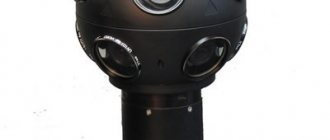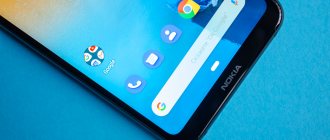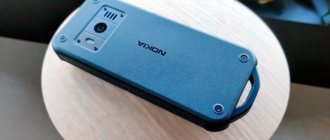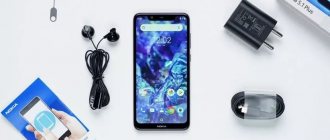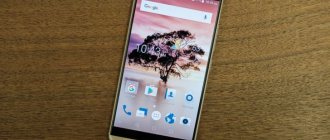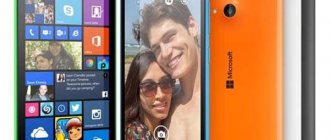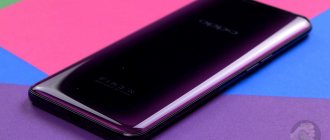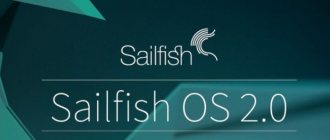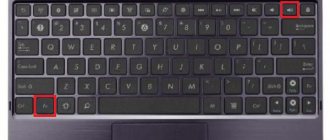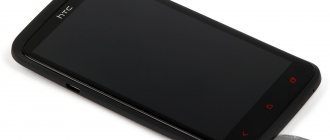Specifications
- Screen: 5.3″, IPS LCD QHD, 554 ppi, 2560 x 1440, 700 nits, Gorilla Glass 5, 2.5D;
- Operating system: Android 7.1.1 Nougat;
- Processor: Snapdragon 835 (MSM8998), 4 x 2.5GHz Kryo, 4 x 1.8GHz Kryo;
- GPU: Adreno 540;
- RAM: 4 GB LPPDDR4X;
- Built-in memory: 64 GB, supports MicroSD memory cards up to 256 GB;
- ZEISS cameras: dual 13/13 MP, color sensor with optical stabilization/monochrome sensor, 1.12 µm, f/2.0, 76.9˚, phase detection autofocus, IR rangefinder, dual-tone flash, 13 MP, phase detection autofocus, 1, 12 µm, f/2.0, 78.4˚, screen flash;
- Battery: 3090 mAh, non-removable;
- Dimensions: 151.5 x 73.7 x 7.9 mm;
- Weight: 160 g;
- SIM slots: 2, nano-SIM, combined slot;
- Communication: GSM: 850/900/1800/1900, WCDMA: 1, 2, 5, 8, TDS-CDMA: 34, 39, LTE Cat. 9, 3CA, Wi-Fi 802.11 a/b/g/n/ac (MIMO), Bluetooth 5.0, GPS (AGPS), GLONASS, BDS, NFC, ANT+, USB Type C 3.1 Gen 1;
- Sensors: light, proximity, accelerometer, electronic compass, gyroscope, fingerprint scanner, Hall sensor, barometer;
- Available colors: glossy copper and indigo, matte steel and indigo;
- Cost at the time of testing: RUB 39,990.
Nokia 8 review: hardware, performance
Testing Nokia 8. Results in the GeekBench benchmark
The basic hardware of the Nokia 8 is the most flagship-grade one - the most powerful Qualcomm Snapdragon 835 chipset, made according to 10 nm design standards. Its eight computing cores are divided into two clusters of Kryo 280 cores, with the first quartet clocked at a frequency of up to 2.45 GHz, and the second at a frequency of up to 1.9 GHz. The Adreno 540 graphics accelerator supports DirectX 12, OpenGL ES 3.2, OpenCL 2.0. The built-in X16 LTE modem with carrier frequency aggregation allows you to receive data at speeds of up to 1 Gbit/s (Cat. 16). In addition, Bluetooth 5.0 and Wi-Fi modules are integrated on the chip (including 802.11ad and 802.11ac Wave-2). The basic configuration of Nokia 8 is complemented by 4 GB of LPDDR4X RAM.
Nokia 8 testing. AnTuTu benchmark results
A few words should be said about the cooling system in Nokia 8. According to the manufacturer, its basic element is a long copper tube shielded with graphite, which evenly dissipates the heat generated by the powerful processor. What reagent is used in the tube (or whether it is used at all) is not specified.
Testing Nokia 8. Results in the 3DMark benchmark
Nokia 8 has 64 GB of fast UFS 2.1 flash memory. In terms of exchange speed, it simply surpasses eMMC 5.1 by several times. they cannot always afford such a replacement, since it is not yet cheap. As already noted, there is space in the combo slot to expand the storage with a microSD/HC/XC memory card up to 256 GB. In addition, USB-OTG technology allows you to connect USB flash drives to the device.
One radio channel can be alternately used by two subscriber identification modules in Dual SIM Dual Standby (DSDS) mode. In 4G networks (Cat.9, 450/50 Mbit/s), the new smartphone supports several frequency bands, including the “Russian troika” LTE-FDD - b3 (1,800 MHz), b7 (2,600 MHz) and b20 (800 MHz) . The wireless communications suite also includes Wi-Fi 802.11 a/b/g/n/ac (2.4 and 5 GHz), ANT+, Bluetooth 5.0 and NFC. The NFC interface allows you to use the Android Pay service, but transport cards could not be read using it.
To determine location and navigation, you can use GPS, GLONASS and BDS satellite systems. Coordination mode over Wi-Fi and cellular networks (A-GPS) is also available. The capacity of the non-removable battery installed in Nokia 8 is 3,090 mAh. The smartphone comes with a charger that supports Qualcomm Quick Charge 3.0 fast charging (18 W, 5 V/2.5 A, 9 V/2 A, 12 V/1.5 A). There is no wireless charging - but it debuted on Nokia Lumia devices in 2012.
The relatively small battery has to pay in full for the Quad HD resolution and high screen brightness. The AnTuTu Tester battery test gave an average result of 7,075 points. A set of videos in MP4 format (hardware decoding) and Full HD quality at full brightness played continuously for just under 6 hours. Quite modest even for a “beginner” flagship.
The Battery settings section offers a handy "Background Action Manager" aimed at ultimately increasing battery life. For this purpose, an automatic transition to energy saving mode is activated at the appropriate battery charge level (5% or 15%).
Equipment
The company's marketers skillfully evoke nostalgia. The photo on the box refers to a well-known logo and a slogan familiar to many, but you can’t fool us. Whether there is something from the good old Nokia in the box remains to be seen.
There are no surprises inside: a candy bar in a transparent envelope, a plump stack of instructions underneath, a SIM card tray ejector and a wired headset in a recess. Additional ear pads give rise to hope that the headphones will be good. The narrow box to the right of the smartphone hides an adapter (5V 2.5A/9V 2A/12V 1.5A) and a USB Type C cable.
Appearance
Nokia 8 arrived for review in a matte steel finish. The all-metal body of the smartphone bears little resemblance to those angular Windows models that the brand produced in its previous life. The device was given the roundness of pebbles polished by a stream of water, but despite the radical change in concept, continuity can still be traced.
The vertical oval framing the dual cameras was found in the Lumia 920. The logo has not changed over the years, and the mechanical keys: power and volume control are still located on the right side. The plastic inserts for the antennas at the top and bottom turned out to be large, but elegant in their own way. The manufacturer claims protection against splashing water according to the IP54 standard.
Otherwise, nothing out of the ordinary. The touch keys on the front panel are backlit. The fingerprint sensor between them is responsible for the Home key, but is not a button itself.
The main mono speaker is located on the bottom edge of the case, to the right of the cable slot and microphone hole.
There was also a place for a 3.5 mm jack - on the contrary, on the top edge. There are no comments about the build quality. The smartphone fits well in the hand. I had to pay for the grip, thin body and pleasant tactile sensations with a slippery front panel. The device lying face down slides along inclined surfaces. Lying on the back - rests on the protruding optical block and sways slightly from taps on the edges of the screen.
Design
We reviewed the Nokia 8 smartphone on the version with a silver casing. It is a monolithic structure and is entirely made of metal. In terms of its design, the phone is not far removed from the angular Windows models that the brand produced before its revival. The vertical oval around the dual camera module is reminiscent of that of the Lumia 920. The corporate logo, as well as the location of the mechanical keys, have remained unchanged: the power control and volume rocker are still on the right, which we have all become accustomed to for a long time.
On the right is a tray for placing SIM cards of any operator and a memory card. When you transfer a flash drive, you have to give up one SIM card.
There are plastic inserts for antennas at the top and bottom of the rear panel, which improves signal reception. The Nokia 8 dual sim review showed that the smartphone received water protection according to the IP54 standard. But it is not recommended to put it under water; it will only withstand small splashes.
Otherwise, nothing outstanding - three touch keys under the screen, they are backlit. A fingerprint scanner is installed between them; it is not a button, but plays the role of the “Home” key.
The speaker is located on the bottom edge of the case, to the right of the USB Type-C port and the microphone hole.
They didn’t give up the 3.5 mm jack either - it’s here on top, so you don’t have to rush to throw out your headphones and you don’t need an adapter.
When reviewing the Nokia 8, we were pleased with the build quality of the case; it fits well in the hand, does not play, and there are no creaks during use. The case is tactilely pleasant, you just don’t want to let go of it, but unfortunately the front panel is too slippery. As soon as you place your smartphone face down, it begins to slide down inclined surfaces. And when you put it on the back, it wobbles from side to side when you press the display, and the bulging camera module is to blame.
Display
For Nokia 8, a 5.3-inch screen was chosen. The LCD matrix has a pixel density of 554 ppi, QHD resolution of 2560 x 1440 pixels. The first thing that attracts attention is Glance mode. Essentially, it's a cross between Ambient and Always On Display.
On a black, locked screen, the smartphone displays the time, charge, date and number of missed calls and messages. After a specified period of time (maximum - 20 minutes), the image disappears, only to appear again when the smartphone is picked up.
Alas, on IPS matrices it is technically impossible to turn on the backlighting of individual pixels. The Nokia 8 screen is illuminated in its entirety in Glance mode. To save energy, the brightness is kept very low - as a result, the contrast of the monochrome image in this mode remains low compared to AMOLED. But there is no flickering backlight characteristic of matrices based on organic LEDs.
As for the overall impressions of the screen, it can be described in one word - upscale. No spurious shades or color distortions. Except that white, at angles close to maximum, slightly loses its naturalness. The reference color gamut and correctly selected balance would make us forget about much more significant shortcomings. The Nokia 8 screen displays black and white fields almost perfectly evenly, and this with a brightness of about 700 nits.
The touch layer recognizes up to 10 simultaneous clicks and supports double tap activation. Activation of the sRGB color mode is available in the developer settings. The Gorilla Glass 5 protective glass is curved around the entire perimeter, equipped with an effective oleophobic coating and an anti-glare filter. Moreover, the latter does not spoil the picture when viewed through sunglasses.
Flagship phone Nokia 8 - Reviews
Nokia and HMD's partnership has already brought Android phones like the Nokia 5 and Nokia 6 this year. While we're happy to see these devices, sometimes you want more power over productivity without restrictions, and that's exactly what we got in a couple of weeks back with the release of the Nokia 8 smartphone.
After spending some time checking out the new phone, we found out whether it will be a top-end smartphone or not. Here's what you can expect.
Nokia 8 design
In many ways, the Nokia 8 is a classic smartphone. It doesn't experiment with ultra-widescreen displays or fancy screens. Nokia isn't trying to cut corners or give us the thinnest phone, like some do.
It may seem puzzling, in a market where cutting-edge technology has recently delivered some truly impressive phones, there's something almost comforting about what the Nokia 8 offers. It's about exactly what kind of phone it wants to be, trying to play on everyone's expectations.
There's no show-stopping 18:9 here, but there's a lot to like. The metal body construction looks great, although some of the Nokia 8 color options have a matte finish, all the parts are highly polished. If we didn't know better, we'd probably swear it was a glass device.
The phone has one drawback, although it may not be relevant to you, the lack of serious waterproofing. The phone's IP54 rating claims splash resistance, but lacks the ability to resist longer contact with water, which is disappointing.
Phone screen
Nokia 8 has a 5.3-inch LCD screen. While most smartphone makers are going to make compromises, HMD offers a 5.3-inch display with a higher resolution of 2,560 x 1,440 pixels, giving it an impressive 550 pixels per inch density.
Although the screen itself does not have any sophisticated effects, we find 2D curved glass and Gorilla Glass 5 protection here.
One of the distinctive features of this display is its exceptional brightness, allowing text to be read even in direct sunlight. This is something worth seeing in person.
Interface and functionality
Some smartphone manufacturers have to develop their own software that sits on top of the existing Android OS, improving functionality and changing the user interface. Regardless of what you're looking for in a phone, whether it's a matter of personal preference, if you've been using a smartphone for a long time, you may have undoubtedly been disappointed with some of the skins from different manufacturers.
There are many users who are looking for pure Android phones where everything looks simple and straightforward.
HMD’s choice is clear to us here as well; Nokia 8 only made minor changes to pure Android 7.1.1; perhaps this is because the manufacturer wanted to make the user experience easier without overwhelming it with unfamiliar software.
Ultimately, the system interface we get is clean and efficient. What more could you ask for?
Iron
The flagship Snapdragon 835 processor is divided into two computing clusters of four Kryo cores, each with a different maximum clock speed. They are complemented by the Adreno 540 GPU and 4 GB of fast RAM.
Despite significant changes under the hood, Qualcomm's new flagship processor does not provide a fundamentally different user experience compared to the Snapdragon 820. It has better graphics performance, is more stable under load, and handles switching between tasks better, but the applications that unlock the potential of this chip are limited. Hardly ever. By installing it in Nokia 8, engineers have provided a significant performance reserve for the future.
As expected, we didn't encounter any performance issues in our testing, either in benchmarks or in games.
Nokia 8 consistently maintains 59-60 frames per second in World of Tanks Blitz with maximum graphics settings. There are no drawdowns in other projects, including those ported from personal computers.
After lengthy synthetic tests, strong uniform heating of the back was recorded, but this can also be caused by the Snapdragon 820. Additional tests showed that the performance of the chip almost does not decrease, regardless of the time under load. Games and high-resolution video recording do not cause heating. It looks like it's time to forget about the notoriety of Qualcomm's flagship chips.
The amount of memory preinstalled in the tested version of the smartphone is 64 GB. Of these, 13.25 GB is occupied by the system, 222 MB by the application, and the rest is at the complete disposal of the owner.
The fingerprint sensor works instantly and accurately, but it is not trained for additional tricks, such as recognizing gestures or blocking applications.
Software
Nokia 8 runs Android 7.1.1 Nougat. The latest security update was dated August 1, 2020. What we have before us is a “clean” operating system, the way Google intended it. There is no doubt that updates will arrive on your smartphone as quickly as possible. The system is lightweight and stable.
The voice assistant continuously waits for commands, the duration of the key backlight is adjusted in the menu, the smartphone understands when it is picked up and automatically reduces the volume of an incoming call. The call can be “answered” by turning the device over.
Interface and functionality
Nokia 8 runs on a pure version of Android 7.1.1 without pre-installed applications. Some will call this a virtue, but others will say that the system is empty and rather boring. Stock apps seem outdated. The gray notification bar is depressing, and the same can be said about the Clock app. It was not possible to find such important options as displaying the battery percentage in digital form, and not just with a battery icon.
Thus, the system does not inspire joy, but only the promise of future updates and smooth performance. This is also not bad, but there is still a feeling that due to the lack of some applications it lacks style and level of refinement.
When it comes to apps, there is one that you need to know about. It's called Support and was created by Nokia itself. Here you can chat with a Nokia agent and get help, find your nearest service center and read the user manual, as well as see answers to frequently asked questions.
One of the unpleasant aspects of the work was vibration. Typically, users don't care much about how the device vibrates, but here the vibration seems a little insistent. It often results from accidentally touching the fingerprint scanner while the smartphone is in your pocket.
Connection
This smartphone's gentlemanly set of wireless interfaces is richly flavored with new technologies. Wi-Fi supports significantly more frequencies than usual, Bluetooth has been updated to version 5.0, in addition to the NFC chip with support for Android Pay, Nokia 8 works with wireless data transmission using the ANT+ standard. The technology was developed by a subsidiary of Garmin specifically for pairing with fitness trackers and other wearable devices.
In addition, unlike many smartphones in which only the connector was replaced with USB Type C, and its “piping” remained old, Nokia 8 has a full implementation of this communication protocol with OTG support, data transfer speeds up to 5 Gbit/s and the ability to share energy with other devices.
Here, according to tradition, a few words about sound. The volume reserve of the main speaker is large. At maximum it produces nasty, piercing high frequencies, but once you lower the volume, everything returns to normal.
When tested, the included earplugs turned out to be better than the lion's share of Chinese headphones. Perhaps music lovers will not like them, but for a complete accessory this is a very high level.
As for navigation, from the very first seconds after turning it on, it accurately points to the location of the smartphone. The Nokia 8's GPS is one of the fastest and most accurate we've encountered.
Packaging and equipment of the smartphone
The phone comes in a cardboard box with an image of hands holding each other, with a hint of nostalgic “Nokia connecting people”.
Included with the device:
- headset with spare ear pads;
- USB-A to USB-C cable;
- Charger;
- a paperclip to remove the SIM slot.
Everything is standard, the components will allow you to immediately start working with Nokia 8.
Camera
At the presentation of the smartphone, emphasis was placed on its photographic capabilities. Of course, the optical module bears the Carl Zeiss inscription. The Germans do not eat their bread in vain - the optics of the Nokia 8 cameras are crystal clear - the test pattern looks clear across the entire area of the frame.
The main camera module, in accordance with the latest trends, is dual. Two 13 MP sensors - color and monochrome, can work both together and separately. Phase autofocus with an infrared rangefinder, the color camera is equipped with an optical stabilizer. In good lighting, this duo performs at a flagship level, and even in the twilight it is not inferior to its competitors. The detail is impressive, and the clarity of the images is beyond criticism.
Color rendition is natural, without software “embellishments”. Digital zoom is not impressive. But the shots taken with flash are captured very well by the Nokia 8 and in terms of color rendering they are practically no different from what the naked eye sees.
We liked how the Nokia 8 handles video shooting. Even with it, optical stabilization and autofocus work almost flawlessly. 3-microphones for surround sound recording, called OZO Audio, will come in handy for streamers. Thanks to them, you can choose whether to emphasize the commentator’s voice or enhance the sounds of events taking place in front of the lens. The viewfinder-integrated functions for streaming to Facebook Live and YouTube Live are designed for the same category of users.
The cameras support the creation of panoramas, HDR, adding watermarks and coordinates to the image, RAW shooting (for this you will need a third-party viewfinder application), “live bokeh” mode and shooting so-called “bosie”, which combines images from the front and main cameras.
It’s worth talking about the last two points in more detail. Adding a second camera allows you to blur the background, but this function is implemented by software, and it sometimes behaves strangely, “blurring” areas that it should not.
There is a significant marketing emphasis on bosie, and it really is a functional feature. True, she doesn't look like in the commercials. The front and rear sensors do not always produce the same image. In reality, differences in the choice of exposure and nuances of color rendering are very striking, destroying all the magic inherent in the mode.
Expectation and performance
If you're currently stuck with mid-range HMD models when thinking about the Nokia 8, then it's safe to say you have low expectations because you haven't taken into account the high performance of this new smartphone.
HMD equips its flagship phone with a no-compromise Snapdragon 835 processor with 4GB of RAM. These are the same specifications that we see in a smartphone like the LG V30.
With 64GB of internal storage, it's further evidence that the Nokia 8 takes its flagship ethic seriously. MicroSD support allows you to increase this volume even further.
Nokia 8 camera
The productive dual camera of Nokia 8 is equipped with Zeiss optics. Nokia approaches this setup from a color and black-and-white angle by pairing two 13-megapixel lenses with optical stabilization.
What else is interesting about Nokia 8? So this is the front camera (although there is only one here), which is an almost perfect copy of the rear one, with the same 13-megapixel resolution, the same pixel size and the same f/2.0 aperture.
All this inspired HMD to add a mode to the smartphone that captures matching photos simultaneously from the front and rear cameras, allowing users to share extraordinary moments.
You can even stream video from both cameras simultaneously, and there's 360-degree audio recording on the front thanks to a three-microphone array.
Let's sum it up
Nokia 8 does not offer anything radically new, does not cause a “wow effect” for a journalist saturated with curved screens, replaceable modules and engineering prototypes, but it has everything that users can love about a smartphone.
This is not a triumphant return, but a strong bid for the revival of the brand. Trashbox will closely monitor the company's successes and recommends that you take a closer look at the new Nokia.
Pros:
- Magnificent QHD screen;
- All metal body;
- Main and front cameras;
- Battery life;
- High performance margin;
- Android unchanged.
Minuses:
- The speaker is shrill at maximum volume;
- Live bokeh doesn't work perfectly.
Final score: 8 out of 10.
